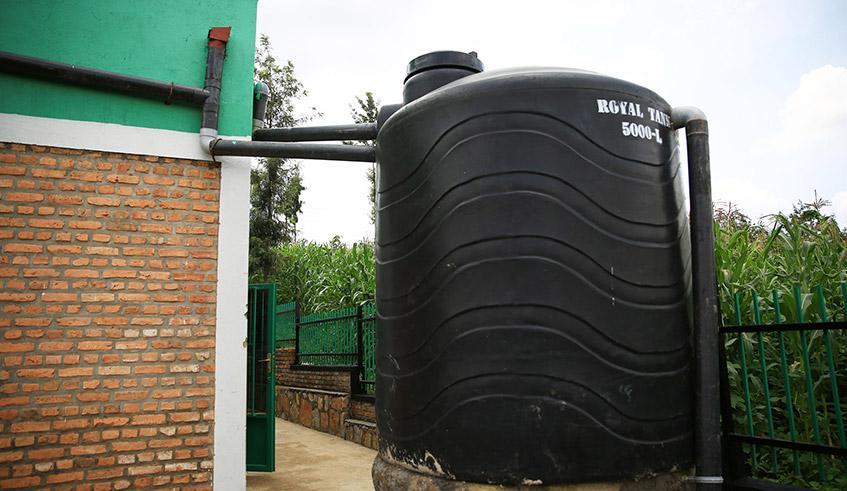Africa-Press – Rwanda. As the rain season begins, floods and soil erosion are likely to ravage the country again, destroying property, infrastructure and livestock, experts have warned.
One way of controlling these problems caused by severe weather conditions is by harvesting rainwater, which according to Rwanda Water Resources Board (RWB) is just at 17 per cent across the country.
Most households who harvest rainwater use a ditch, which accounts for 13 per cent of all the types of rainwater management systems used in the country, said Alexis Musabyimana, in charge of Water Storage Development at RWB. Only two per cent of the households use rainwater tanks.
“All citizens constructing houses should be mobilized to put rainwater harvesting systems on their building to help store water which otherwise would cause runoff, erosion, flash floods and damage to infrastructure,” he said.
This appeal comes when the September to December weather forecast shows that parts of the Western, Southern, and Northern as well as Kigali are set to experience heavy rainfall.
The expected near normal rainfall may lead to extreme weather phenomena, leading to flooding, landslides, and strong winds, Rwanda Meteorology Agency warned In addition to containing floods and soil erosion, harvesting rainwater is key to boosting crop yield and improving food security.
$40m required to equip public buildings with rainwater storage systems
It would take an investment outlay of $40 million to equip all identified public buildings with rainwater storage systems, Musabyimana said, citing a recent report. Therefore, he proposes, architectural designs for new public buildings should contain rainwater harvesting systems.
The Ministry of Environment has developed a set of guidelines for setting up rainwater harvesting systems on public and private properties. However, they are largely not adhered to.
Nearly 74 per cent of public buildings do not have any rainwater collection system, Musabyimana disclosed, while 24 per cent of them had a partial rainwater harvesting system. This means that just 2.4 per cent of the public buildings are equipped with rainwater harvesting systems.
Among the rainwater harvesting systems, Musabyimana recommends the use of plastic tanks, masonry tanks, artisanal tanks made of locally available materials, and underground concrete tanks.
“It may apply to a single household or for communal systems like in the settlement,” he said.
Other techniques of rainwater harvesting include the reduction of runoff by constructing erosion control structures including trenches, terraces and ponds.
High costs discourage households
Although institutions in charge of environment and disaster prevention are encouraging the uptake of rainwater harvesting, low income earning residents say the high cost tanks are hampering the efforts.
“I have tried to ask the price and was told that a 3,000-litre rainwater harvesting tank goes for Rwf280,000 minimum. This cost is not affordable to many people unless there is a way of subsidizing or paying in instalment,” said Silas Munyarugende, a resident of Kimisagara sector in Nyarugenge District.
Xaverine Ndayisenga, a resident of Nyabihu District, said that even a 2,000-litre rainwater harvesting tank goes to over Rwf175,000 adding many have failed to afford the price as an upfront cost.
“There is a need for setting up a loan model where companies can probably work with financial institutions so that those who are poor can get tanks and pay back gradually. It might be possible but people are not aware,” she noted.
“Those who have rainwater harvesting tanks use the water to irrigate kitchen gardens. But most of them got support from projects since we can’t afford the cost,” said Nyamvura Melanie, a resident of of Mukarange sector in Gicumbi District.
The New Times
found that a 3,000-litre tank goes for Rwf280,000, a 10,000-litre tank goes for Rwf760,000, a 5,000-litre rainwater harvesting tank goes for Rwf350,000.






